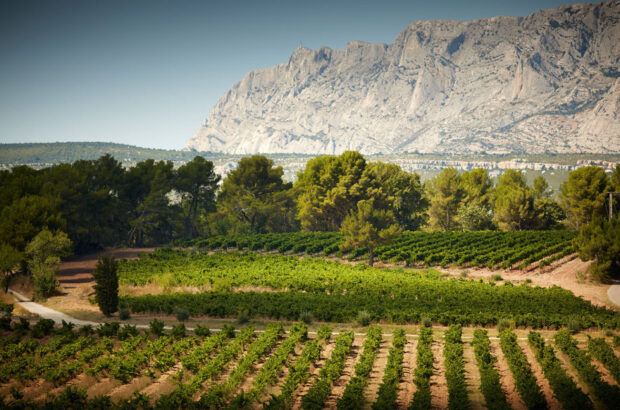Wine myths nourish when we use them as inspiration, as starting points for research or discussion, or as stories which resonate in our collective imagination. It’s when we take them too literally, and return to them over-obsessively, that they begin to clamp their jaws about us. National myths based on short, isolated episodes in history (such as France in 1789, the US in 1791 or the UK in 1940) furnish classic examples of this, but the wine world has dangerously alluring myths, too. Here are four.
1 ‘The vine must suffer’.
Yes, Vitis vinifera is well adapted to Mediterranean conditions; yes, the quality of wine-making fruit declines on rich, well-watered clay soils which produce prolific crops. All this tells us, though, is the vine is content on stone-scattered soils over long, dry summers. Content; but not suffering.
Anguished, existentially stressed vines produce meagre, poorly balanced fruit – or no fruit at all. If you take a look at vineyards in renovation (ploughed prior to a fallow period before replanting) in the Médoc or on mid-slopes in Burgundy or Barolo, you won’t see a bed of nails but a nourishing, well-balanced diet of soil and stone. Great wine-making fruit comes from fit, adequately nourished vines given the discipline of attentive husbandry, not from a starveling gaggle.
2 ‘Freshness means acidity’.
Winemakers today are concerned with freshness, and rightly so: it’s a prized wine quality in a warming world, and a key means by which wines achieve the balance that underlies drinkability and excellence alike. But acidity considered in isolation is just one source of freshness in wine; tannins, extracts, vinosity and sappiness, perfume and innate fruit quality are others. Freshness has as much to do with skins (and sometimes stems) as with acidity.
Even when acidity does provide the principal element of balance in a wine, freshness derives not from its quantity but its quality. We should, in fact, speak of ‘acidities’ in wine, and the more intimately these acidities are bonded with other elements in a wine (such as fruit and texture), the better the result. Freshness itself is born in the vineyard, inscribed in the fruit and defined by the ripening process; it’s there to be found, saved or lost by the vine’s human interlocutors.
3 ‘Oak is best’.
The relationship between the oak tree (first coopered by Celts) and the vine (brought west by Greeks) is a long and avuncular one, and most wine drinkers today continue to fix their bearings on fine wines fermented or aged in oak. No wine, though, need reach its drinker via an oaky embrace. Many wines, especially those with a certain sweetness of fruit made in warmerclimate zones, come to market not ennobled but disfigured by oak. As more fine wines begin to make their way oaklessly to market, that flaw will become increasingly apparent; younger drinkers, in particular, often feel that palpable oak is exaggerated oak. Amphorae, jars, eggs, steel barrels, concrete tanks: the future may look like this, complemented by seasoned oak in large formats, with small, new oak a curious choice for retro wines. (Well, it’s possible.)
4 ‘The secret’s in the soil’.
If we could speak to vines, they’d chuckle on hearing this. Vines anchor themselves in soil, and draw water and nutritional supplements from it – but they gorge on air and light, on cloud and breeze, and they make leaves and their fruit chiefly from what they find in this upper world. The soil can only ever be a part of that story. The secret, the vines might reply, is in the season. The secret’s in the shape of the hillside and the way it’s fingered by air currents and bathed by sunlight; in temperatures during midsummer’s hours of darkness; in the moments a wet west wind may have turned to a dry northern one; in companion plants or an insect community; in metres to the forest edge.
The secret, in fact, is everywhere, in a mass of inputs so complex as to defy all inventory. An obsession with soil alone stops us seeing that.







